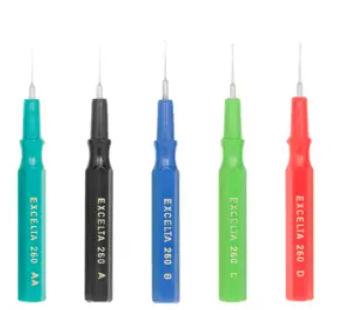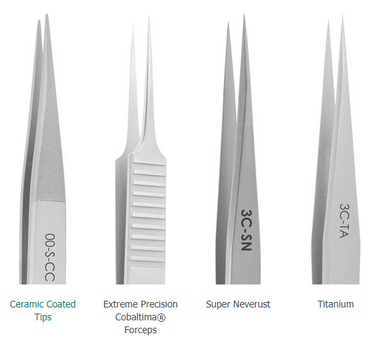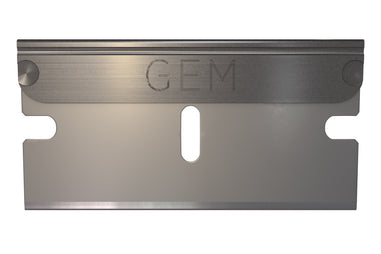- No products in the cart.
One of the key variables in the design of an interconnect scheme is the diameter of the bonding wire used to make the connections to the IC. For more information on why this is a critical variable, please see Lab Pro Blog on Developing A Bonding Wire Gauge Based On ASTM Guidelines.
The diameter of wires used for wire bonding is typically specified using one of three different units: microns (μm, or 0.001 mm), mils (1 mil = 0.001 inch), or AWG (American wire gauge). The conversion of mils to microns is 1 mil = 25.4 microns.
Understanding An Aluminum Wire Sizing Chart
Cross-sectional area
To calculate cross-sectional area (A):
A = π × (d/2)2
where d is the diameter of the wire.
Cross-sectional area is important because of cost (where material cost increases proportionally with cross-sectional area), and appropriate matching to the bond pad area.
Resistance
The total resistance of a wire (R) is given by:
R = ρ × L / A
where R is the resistance (in Ω), ρ is the material resistance (in units of Ω times length), A is the cross-sectional area of the wire, and L is the wire length. For aluminum, ρ = 2.82 × 10-5 Ω-mm [1].
Resistance is important in determining voltage or power loss along the wire, as well as the degree of heating of the wire as a function of current.

Fusing current
The fusing current is defined as the maximum current that a wire can carry before melting in air. This current is affected by several factors, such as the length of the wire, quality and types of connections made to the wire, presence of insulation, and other types of cooling that may be present. Therefore, the fusing currents given in this table are rough estimates that may not apply in all situations.
The fusing current is a key parameter of bonding wire, since it effectively determines the maximum amount of current flow through the wire at any time.
Recommended cutting tools
For cutting the very fine wires used in wire bonding, which are usually found in confined or sensitive spaces, precision cutting tweezers are the tool of choice. The table below shows available cutting tweezers with the capacity to cut wires of each given diameter.
Cutting tools are listed by product code in the table; more detail is available on the carbon steel and stainless steel cutting sections of the online catalog are given below
When selecting a cutting tool for bonding wire, besides the range of wire diameter capacity, other properties and features to consider include:
-
ESD coating, needed when equipment can be damaged by electrostatic discharge
-
Hardness of the cutting surface versus the wire to be cut; for very hard wire materials, hardened inserts on the cutting surface can be used
-
Shape of the cut (beveled versus flush)
-
Cutting head profile (for example, rounded versus fine point)
-
Cutting surface orientation (parallel versus perpendicular versus angled relative to the tweezer body)
The cutting surfaces of cutting tweezers should be cleaned and inspected regularly for wear and damage.
For more information on what to consider when selecting a wire bond diameter, see this post: <link to Lab Pro Article>.
Sizing Chart For Pure Aluminum Wire
|
Wire diameter |
Cross-sectional area |
||||||
|
AWG |
mil |
μm |
mil2 |
mm2 |
Resistance per 10 mm (Ω) |
Recommended cutting tool |
|
|
24 |
20 |
510 |
314 |
0.204 |
0.0014 |
22 - 60 |
Excelta 15A Series 14A-GW |
|
30 |
10 |
255 |
78.5 |
0.051 |
0.0055 |
7 - 18 |
Excelta 15A Series 15A-RW 14A-GW 15A-GW-S |
|
32 |
8 |
202 |
50.3 |
0.032 |
0.0088 |
5 - 12 |
Excelta 15A Series 15A-RW 14A-GW 54-MW 15A-GW-S |
|
34 |
6.3 |
160 |
31.2 |
0.020 |
0.0140 |
Excelta 15A Series 15A-RW 14A-GW 54-MW 15A-GW-S |
|
|
36 |
5 |
127 |
19.6 |
0.013 |
0.0223 |
5 - 6 |
Excelta 15A Series 15A-RW 52-MW 55-MW 14A-GW 54-MW 15A-GW-S |
|
38 |
4 |
101 |
12.6 |
0.0080 |
0.0352 |
3.0 - 4.0 |
Excelta 15A Series 15A-RW 52-MW 55-MW 14A-GW 54-MW 15A-GW-S |
|
40 |
3.1 |
80 |
7.55 |
0.0050 |
0.0561 |
Excelta 15A Series T15A-RW 52-MW 55-MW 14A-GW 54-MW 15A-GW-S |
|
|
2 |
50.8 |
3.14 |
0.0020 |
0.139 |
1.0 - 1.2 |
Excelta 15A Series 15A-RW 52-MW 55-MW 14A-GW 54-MW 15A-GW-S |
|
|
1 |
25.4 |
0.79 |
0.0005 |
0.557 |
0.27 - 0.30 |
Excelta 15A Series T15A-RW 52-MW 55-MW 14A-GW 54-MW 15A-GW-S |
|
|
0.7 |
17.8 |
0.38 |
0.0002 |
1.14 |
Excelta 15A Series 15A-RW 52-MW 55-MW 14A-GW 54-MW 15A-GW-S |
||
|
0.4 |
10 |
0.12 |
0.00008 |
3.59 |
Excelta 15A Series 15A-RW 52-MW 55-MW 14A-GW 54-MW 15A-GW-S |
||
|
0.2 |
5 |
0.03 |
0.00002 |
14.4 |
Excelta 15A Series 15A-RW 52-MW 55-MW 14A-GW 54-MW 15A-GW-S |
||
The selection of wire size/diameter is a critical parameter for design of an interconnect scheme using aluminum wiring. It is important for the designer to understand the various properties that vary with wire diameter, which are presented in an aluminum wire sizing chart such as the one shown here.
For over 40 years, Lab Pro has been committed to delivering the highest quality cutters and tweezers to tech laboratories worldwide. Come visit the biggest Lab Supply showroom in California, or contact us online or at 888-452-2776.












































